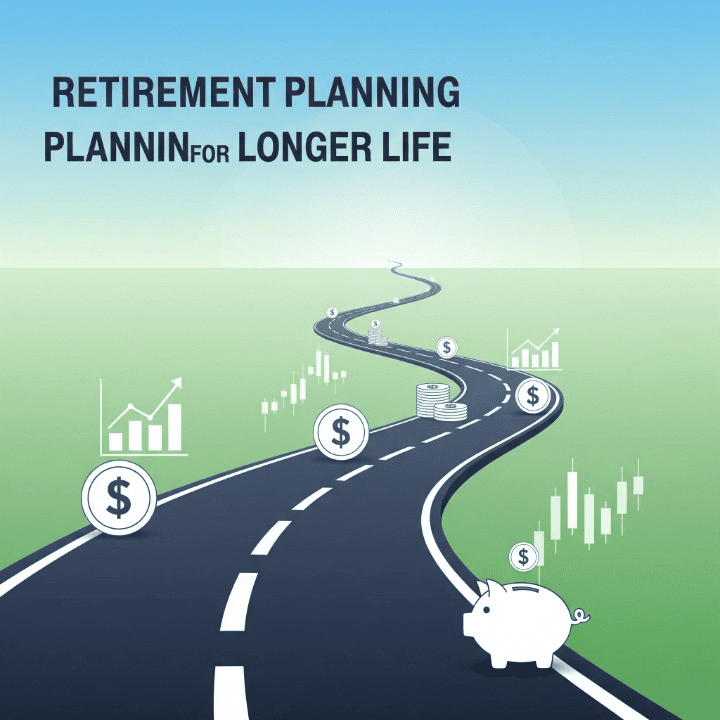
Introduction
The prospect of living a longer life is one of modern society’s greatest achievements. People are now living well into their 80s, 90s, and even beyond. While this offers incredible opportunities for extended time with family and personal pursuits, it also presents a significant challenge for retirement planning. A longer lifespan means a longer retirement. Your savings must not only support you for 20 years but potentially for 30, 40, or even 50 years. This requires a fundamental shift in how we think about saving, investing, and spending in our later years. This comprehensive guide will explore the financial implications of a longer life, identify the key risks, and provide practical strategies for building a retirement plan that is resilient enough to last as long as you do.
Understanding the Financial Challenges of Longevity
A longer life brings unique financial risks that traditional retirement models may not fully address. Being aware of these challenges is the first step toward a more effective plan.
1. The Risk of Outliving Your Savings
This is the single greatest risk in the longevity economy. If you stop working at 65 and live to 95, your money must last for three decades. A financial plan designed for a 20-year retirement will likely fail to support a 30-year or longer retirement. You need to make sure your savings strategy is built to go the distance, which means a combination of smart savings, strategic investing, and a thoughtful withdrawal plan.
2. The Impact of Inflation
Inflation is the silent wealth killer. Over 30 years, even a low inflation rate of 3% can dramatically reduce your purchasing power. What costs $100 today could cost nearly $250 in three decades. Your retirement income must not only keep pace with inflation but outgrow it. This highlights the importance of keeping a portion of your retirement portfolio in growth-oriented assets, like stocks, throughout your life.
3. The Rising Cost of Healthcare
Healthcare costs are one of the fastest-growing expenses in retirement. Medical treatments, long-term care, and prescription drugs can consume a significant portion of a retiree’s budget. It’s estimated that a retired couple today will need hundreds of thousands of dollars for healthcare expenses throughout their retirement. A solid retirement planning strategy must include a dedicated plan for these costs, which might involve a Health Savings Account (HSA) or a careful analysis of Medicare and supplemental insurance options.
Strategies for a Longer and More Secure Retirement
Building a resilient retirement plan for the longevity economy requires a proactive and multi-faceted approach. You cannot simply save and hope for the best.
1. Re-evaluating Your Savings Rate
The old rule of thumb to save 10% of your income is no longer enough for many people. To support a longer retirement, you should aim to save 15% or more, especially if you are starting later in life. This may sound challenging, but even small increases in your savings rate can have a dramatic impact over 30 to 40 years due to the power of compound interest.
2. Investing for Growth, Even in Retirement
Many people believe they should shift all their money into conservative, low-risk investments once they retire. While it’s wise to reduce risk, moving entirely into cash and bonds can be a major mistake. Your portfolio needs to keep growing to combat inflation and ensure your money lasts. A common strategy is to maintain a portion of your portfolio in stocks, perhaps 30-50%, even well into your retirement years. This provides the necessary growth to outpace inflation and the rising cost of living.
3. The Power of a Phased Retirement or “Unretirement”
Working longer is one of the most powerful tools for improving your retirement outlook. A few extra years of work can add more to your savings, allow your existing investments to grow, and, crucially, enable you to delay claiming Social Security. Delaying Social Security to age 70 can increase your monthly benefit by up to 8% per year past your Full Retirement Age. This creates a larger, inflation-adjusted income stream for the rest of your life. A phased retirement, where you transition from full-time work to part-time work, can also provide income while reducing stress.
4. Creating a Sustainable Withdrawal Strategy
How you take money out of your retirement accounts is just as important as how you put it in. A common approach is the “4% rule,” which suggests you can withdraw 4% of your portfolio’s value in the first year of retirement and adjust that amount for inflation each year. However, in today’s economic climate, some financial planners recommend a more flexible approach, perhaps starting with a lower withdrawal rate or adjusting withdrawals based on market performance. A well-thought-out withdrawal plan helps you avoid depleting your savings too quickly.
5. Considering a Longevity Annuity
A longevity annuity is a specialized financial product designed to address the risk of outliving your savings. You pay a premium to an insurance company, and in return, they guarantee a stream of income that starts at a very old age, like 85. This provides a safety net that ensures you will have income even if your other savings run out. While they are a more advanced tool, they can be a great option for those who are particularly concerned about longevity risk.
Conclusion
Living a longer life is a gift, and with the right financial planning, it can also be a time of incredible financial security and freedom. The key is to recognize that a longer life requires a different approach to retirement planning. You must take into account the risks of outliving your money, inflation, and rising healthcare costs. By re-evaluating your savings rate, investing for long-term growth, considering a phased retirement, and creating a sustainable withdrawal strategy, you can build a robust retirement plan that is built to last. A secure and prosperous retirement isn’t a matter of luck; it’s a matter of planning. The decisions you make today will shape your financial reality for decades to come.



